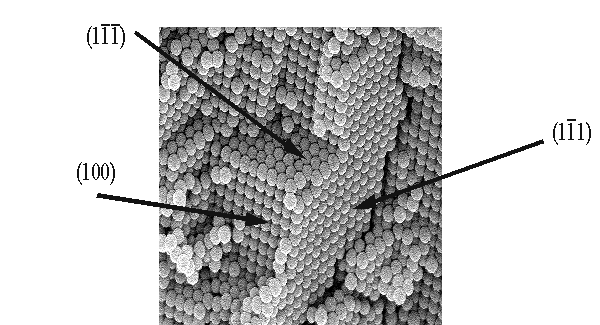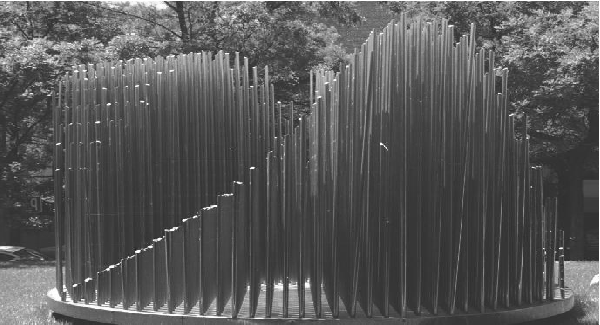
F. Meseguer fmese@fis.upv.es
Unidad Asociada CSIC-UPV.
Departamento de Fisica Aplicada.
Universidad Politecnica de Valencia,
Camino de Vera s/n. 46022 Valencia. Spain.
Popular version of paper 1pPA3
Presented Monday afternoon, October 12, 1998
136th ASA Meeting, Norfolk, VA
Sometimes, science and art, two fields of human activity with almost no relationship, have curious cross-links. Minimalism is an artistic trend in modern art where a regular repetition of material objects (in sculptures) or sound sequences (in music) occurs. Under appropriate conditions, minimalist sculptures can produce destructive interference of waves, as it happens in other systems for electromagnetic waves. This is related to a new field in optics called "photonic band gap crystals." Here the periodic structure forbids the propagation of light, at a given specific frequency range, just as semiconductors forbid electrons for certain bands of energy. Photonic crystals are of paramount importance as occurred forty years ago when semiconductor science and technology was born.

Figure 1
Scanning electron microscope Image of an artificial opal structure. It is formed by the periodic packing of silica spheres of about 0.5 micron diameter, the wavelength of the green color of the light. Different crystalline facets can be observed in the image.
The presence of gaps in semiconductors gave rise to spectacular technological applications as transistors, diodes, detectors, lasers, etc. The fabrication of PBG materials could induce a similar revolution in photonic technology. Interference phenomena can also be observed in nature. The nice colors of opal gemstones come from the diffraction of submicrometer-sized silica particles arranged in a close-packed structure. This occurs because the visible light has a wavelength of the order of the interparticle distance in the gemstone.

Figure 2
Eusebio Sempere's sculpture in Madrid, where we performed the first experiment on sound attenuation. The distance between cylinders is 10 cm.
Recently, we have shown that certain minimalist sculptures can attenuate a range of frequencies in a manner similar to what occurs with electromagnetic waves in photonic band gap crystals. First, in 1995, we performed the experiment in open air on a sculpture located in Madrid.

Figure 3
Metal hanging bars in a triangular symmetry in the echo free chamber viewed from below
Then, to make a deeper study, in an echo-free chamber, we made our own "minimalist sculptures" by hanging metal cylinders on a frame. We performed experiments on different types of symmetry (square, triangular and honeycomb). Finally, we tried a hybrid honeycomb-triangular symmetry where large gaps were predicted for electromagnetic waves. We also teamed up with a theoretical group in Madrid to model the sound propagation through the periodic structure.
Although the triangular lattice is also a good proposal we found larger gaps, independent of direction, in the hybrid system. This is the first time a sound gap in the audible frequency region is shown. We also found that certain allowed modes of sound propagation are not transmitting because they do not couple with the periodic system. We called these "deaf modes." This can be of application in sound shielding of low frequency where technological solutions are difficult and expensive.